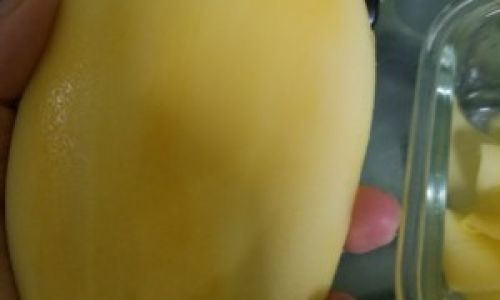Table of content
Strawberries, with their vibrant red hue, sweet aroma, and juicy texture, are a beloved fruit worldwide. Whether enjoyed fresh, baked into desserts, or blended into smoothies, their versatility and flavor make them a staple in kitchens. However, their delicate nature raises a common question: Can strawberries spoil if left unrefrigerated overnight? This article explores the science behind strawberry spoilage, factors influencing their freshness, and practical tips to extend their shelf life.
Understanding Strawberry Spoilage: A Biological Perspective
Strawberries, like most fresh produce, are living organisms even after harvest. Their post-harvest life is a race against time, as natural processes such as respiration, enzymatic activity, and microbial growth accelerate decay. The primary causes of spoilage include:
- Microbial Activity: Bacteria (e.g., Pseudomonas, Erwinia) and fungi (e.g., Botrytis cinerea, Rhizopus stolonifer) thrive on strawberries’ high moisture and sugar content. These microorganisms break down cell walls, causing softening, discoloration, and mold.
- Enzymatic Reactions: Enzymes like pectinase and polyphenol oxidase catalyze the breakdown of pectin (a structural component) and oxidation of phenolic compounds, leading to mushiness and browning.
- Respiration: Strawberries continue to “breathe” after picking, consuming oxygen and releasing carbon dioxide and ethylene—a ripening hormone that accelerates aging.
Factors Influencing Overnight Spoilage
The likelihood of strawberries spoiling overnight depends on several environmental and pre-harvest conditions:
Temperature
Strawberries are highly perishable at room temperature (68–77°F or 20–25°C). At these temperatures, microbial growth and enzymatic activity double every 20–30 minutes. Refrigeration (32–36°F or 0–2°C) slows these processes significantly, extending shelf life by 3–7 days. Leaving strawberries unrefrigerated overnight can reduce their freshness by 12–24 hours, depending on humidity and airflow.

Humidity
Strawberries require high humidity (90–95%) to prevent dehydration. However, excess moisture in storage containers promotes microbial growth. A balance is crucial: ventilated containers or paper towels can absorb excess moisture without drying out the fruit.
Initial Quality
The ripeness and handling of strawberries before purchase affect spoilage rates. Overripe or bruised berries are more susceptible to decay, as damaged cells leak nutrients that feed microorganisms.
Ethylene Exposure
Strawberries are sensitive to ethylene, a gas emitted by fruits like apples and bananas. Ethylene accelerates ripening and senescence, making co-storage with ethylene-producing produce ill-advised.
Signs of Spoilage: What to Look For
Even overnight, strawberries can exhibit subtle signs of degradation:
- Mold: Fuzzy gray or green patches indicate fungal growth. Mold can penetrate deep into the fruit, making unsafe to consume even if only visible on the surface.
- Mushiness: Overripe strawberries become soft and lose their firm texture. Extreme softness signals cell wall breakdown.
- Shriveling: Dehydration causes wrinkled skin and a dull appearance.
- Off Odors: A fermented or sour smell suggests bacterial activity.
- Leakage: Liquid oozing from the fruit indicates advanced spoilage.
Scientific Mechanisms Behind Overnight Deterioration
Microbial Proliferation
At room temperature, psychrotrophic (cold-tolerant) and mesophilic (moderate-temperature) bacteria multiply rapidly. Pseudomonas spp., common on strawberries, produce pectinolytic enzymes that degrade cell walls, causing collapse. Fungi like Botrytis cinerea (gray mold) release conidia that germinate within hours under humid conditions.

Oxidative Browning
Polyphenol oxidase (PPO) reacts with oxygen, converting phenolic compounds into brown pigments (melanin). This process, accelerated by cell damage, is why bruised strawberries brown quickly.
Water Loss
Strawberries are 91% water. Even a 5% loss through evaporation or respiration results in wilting. Refrigeration reduces transpiration but requires humidity control to prevent condensation.
Storage Solutions: Maximizing Freshness
Proper storage can mitigate overnight spoilage:
Refrigeration
- Temperature: 32–36°F (0–2°C) slows microbial and enzymatic activity.
- Containers: Use breathable containers (e.g., perforated plastic or clamshells) to allow airflow. Line with paper towels to absorb excess moisture.
- Position: Store strawberries in the main compartment, not the crisper (unless humidity-controlled), to avoid ethylene buildup.
Room Temperature Storage
If refrigeration is unavailable:
- Ventilation: Place berries in a single layer on a dry towel to prevent moisture accumulation.
- Cool Location: Avoid direct sunlight or heat sources (e.g., stoves, windows).
- Short-Term Use: Consume within 4–6 hours for optimal freshness.
Washing Practices
Wash strawberries only before eating. Washing removes the natural waxy cuticle, a protective barrier against pathogens and dehydration. A vinegar solution (1 part vinegar, 3 parts water) can kill surface bacteria without affecting taste.

Freezing
For long-term storage, freeze strawberries on a baking sheet before transferring to airtight bags. Frozen berries last 8–12 months but are best used in cooked dishes.
Myth Busting: Common Misconceptions
- “Refrigeration makes strawberries mushy”: While cold temperatures can slightly alter texture, spoilage from room-temperature storage is far more detrimental.
- “Organic strawberries last longer”: Organic and conventional strawberries have similar shelf lives if handled identically.
- “Mold can be scraped off”: Mold produces mycotoxins that permeate the fruit, making scraping ineffective.
Case Study: Commercial vs. Home Storage
Commercial strawberries are often treated with post-harvest solutions (e.g., calcium chloride, ascorbic acid) to delay spoilage. However, these treatments are not always available to consumers. Home storage relies on temperature control and minimal handling.
Conclusion: To Refrigerate or Not?
Leaving strawberries unrefrigerated overnight accelerates spoilage due to microbial growth, enzymatic activity, and water loss. While refrigeration is not foolproof, it significantly extends freshness by slowing these processes. To maximize shelf life:
- Purchase undamaged, unripe strawberries.
- Store unwashed in a ventilated container with paper towels.
- Refrigerate immediately and consume within 3–5 days.
- Discard berries showing signs of mold or severe softening.
In summary, while strawberries may not “go bad” in a single night at room temperature, their quality deteriorates rapidly. Proper storage ensures these delicate fruits remain a vibrant, nutritious, and delicious part of your diet. As with all perishables, the adage “when in doubt, throw it out” prioritizes safety over regret.





0 comments